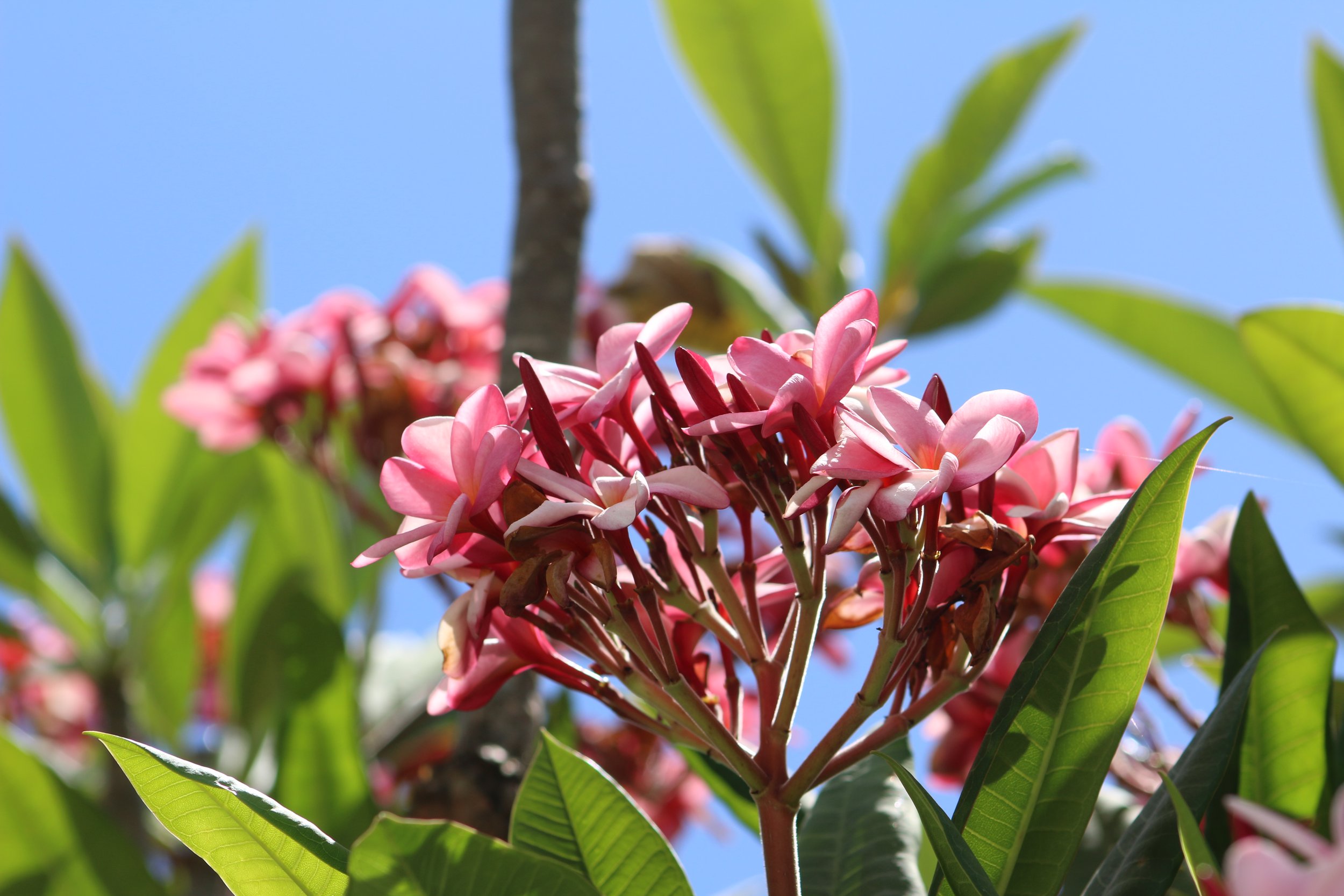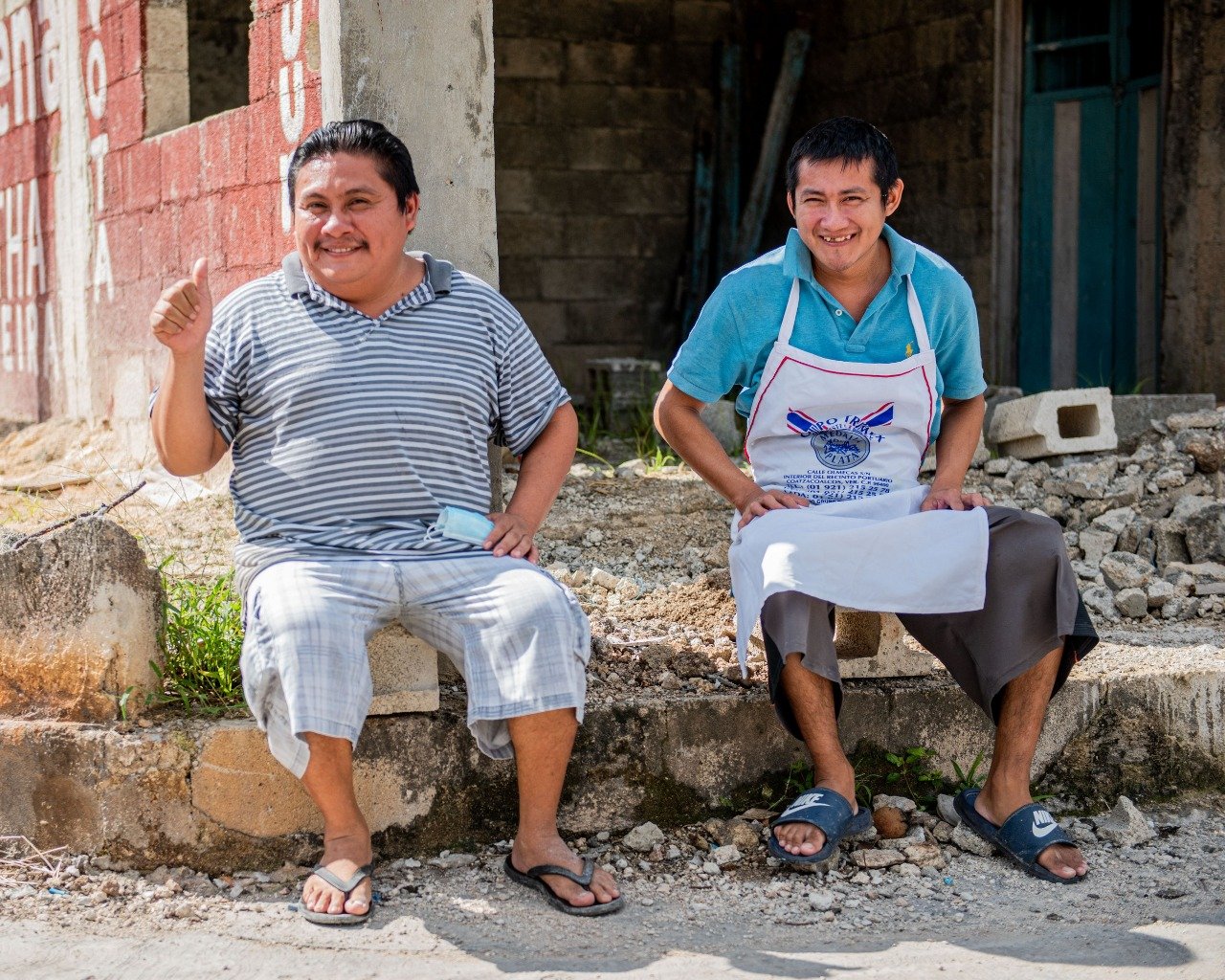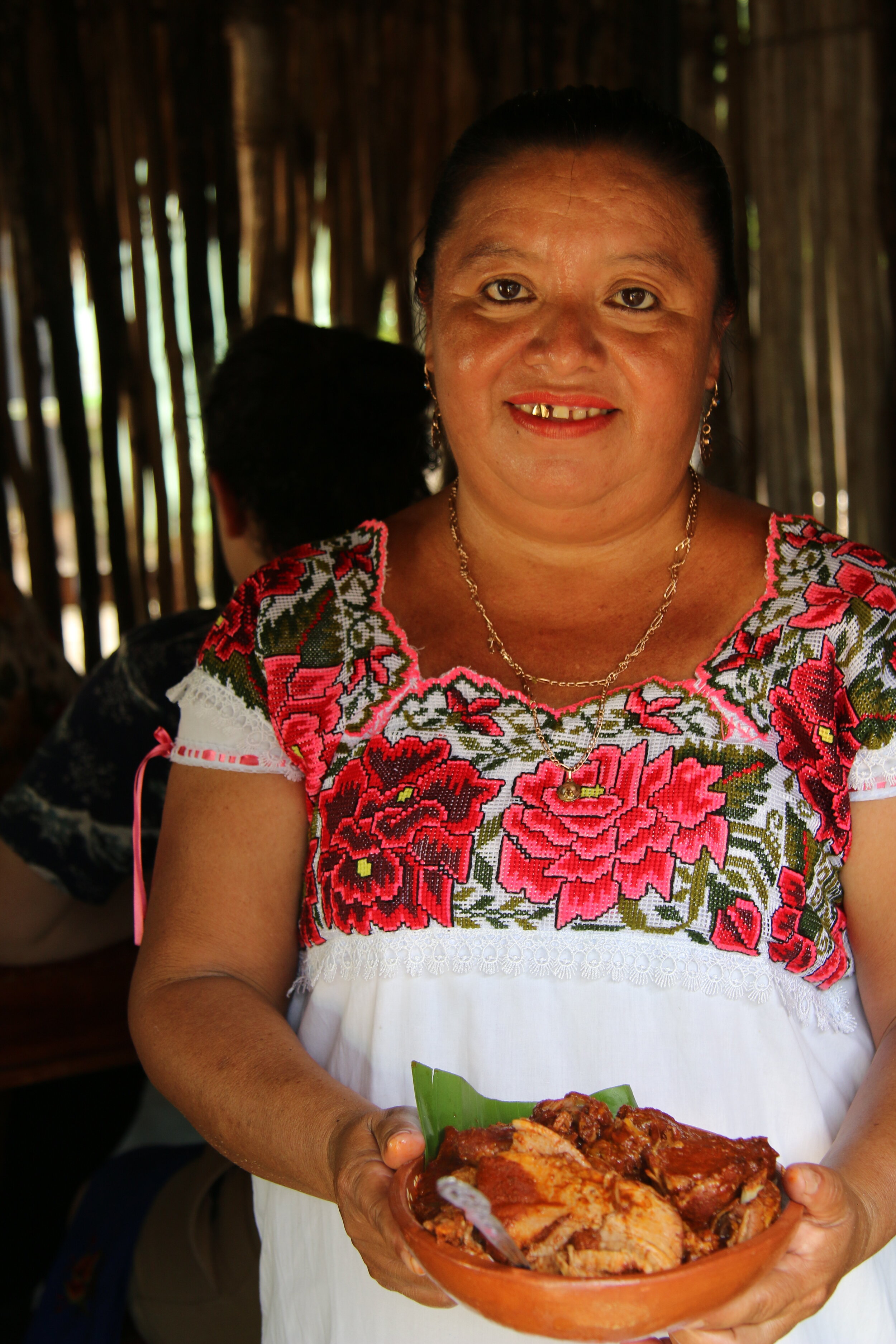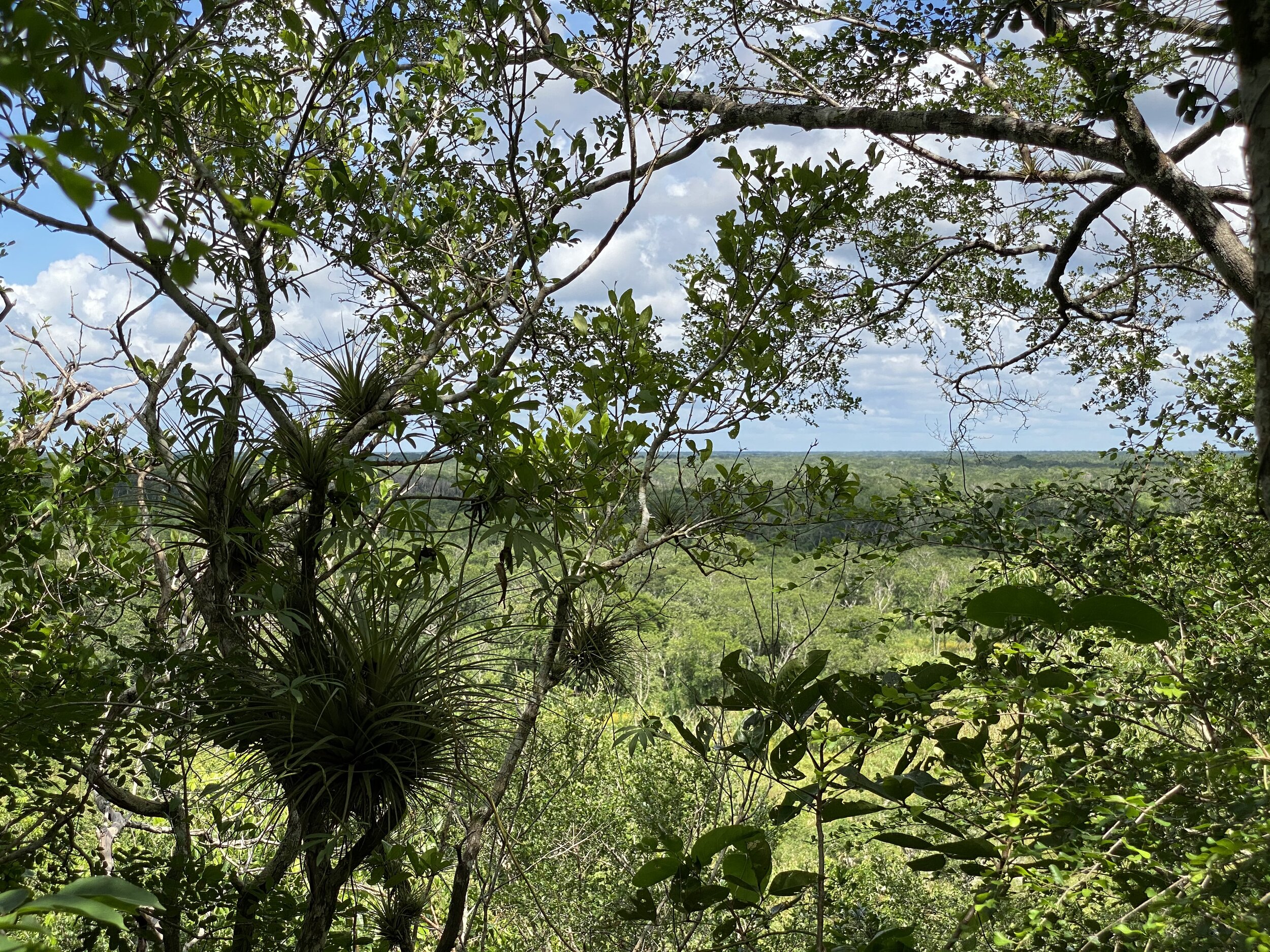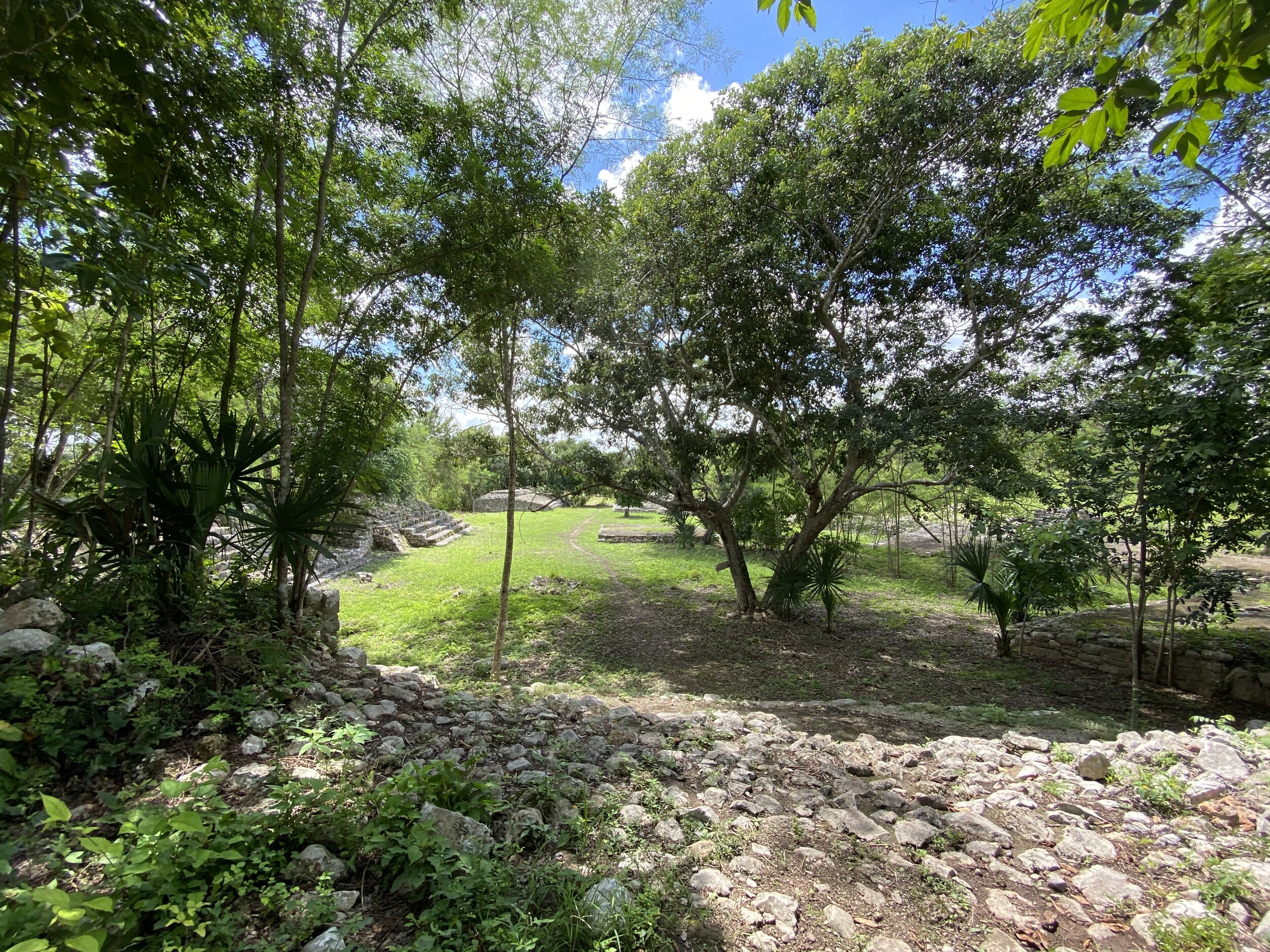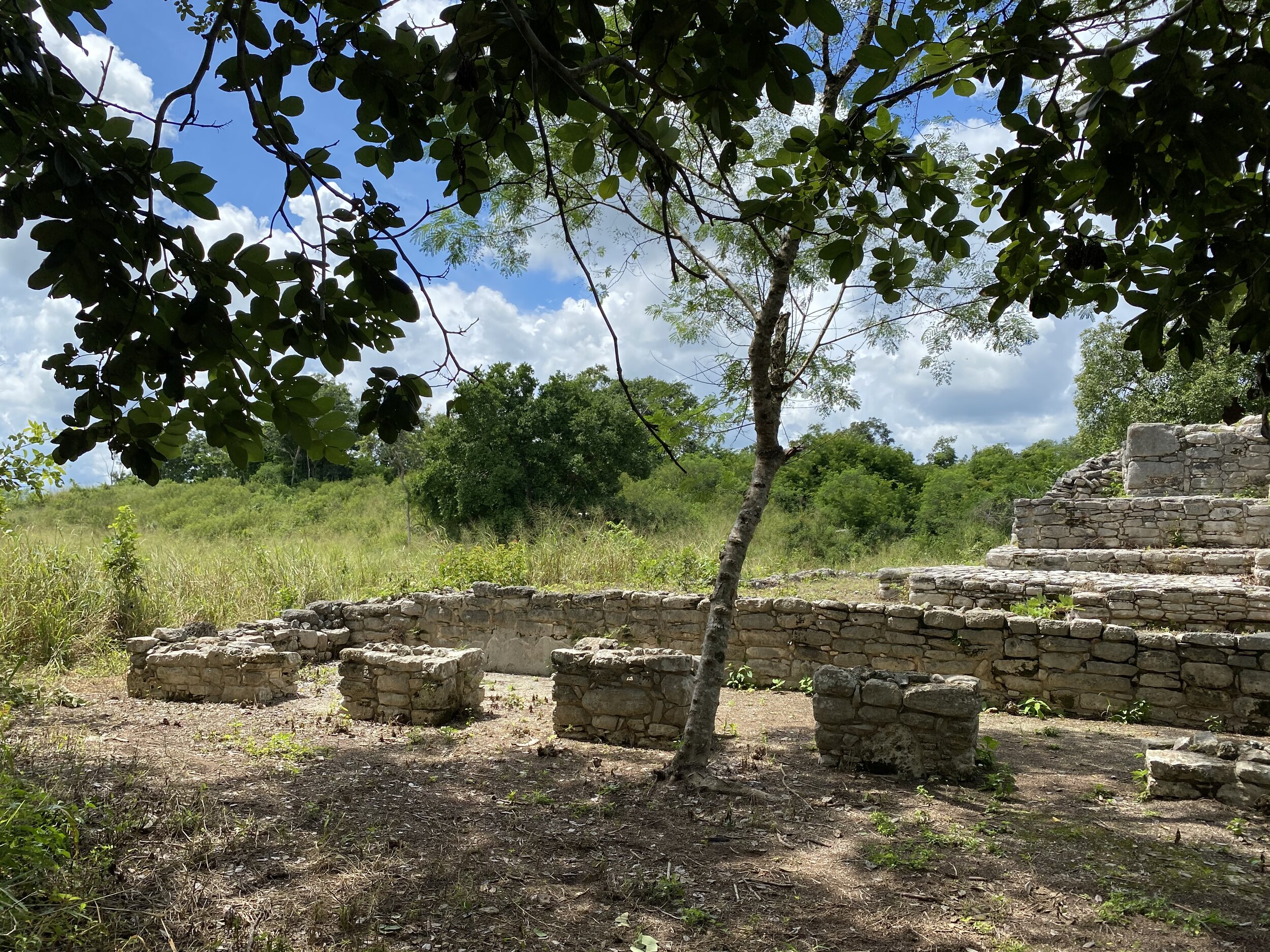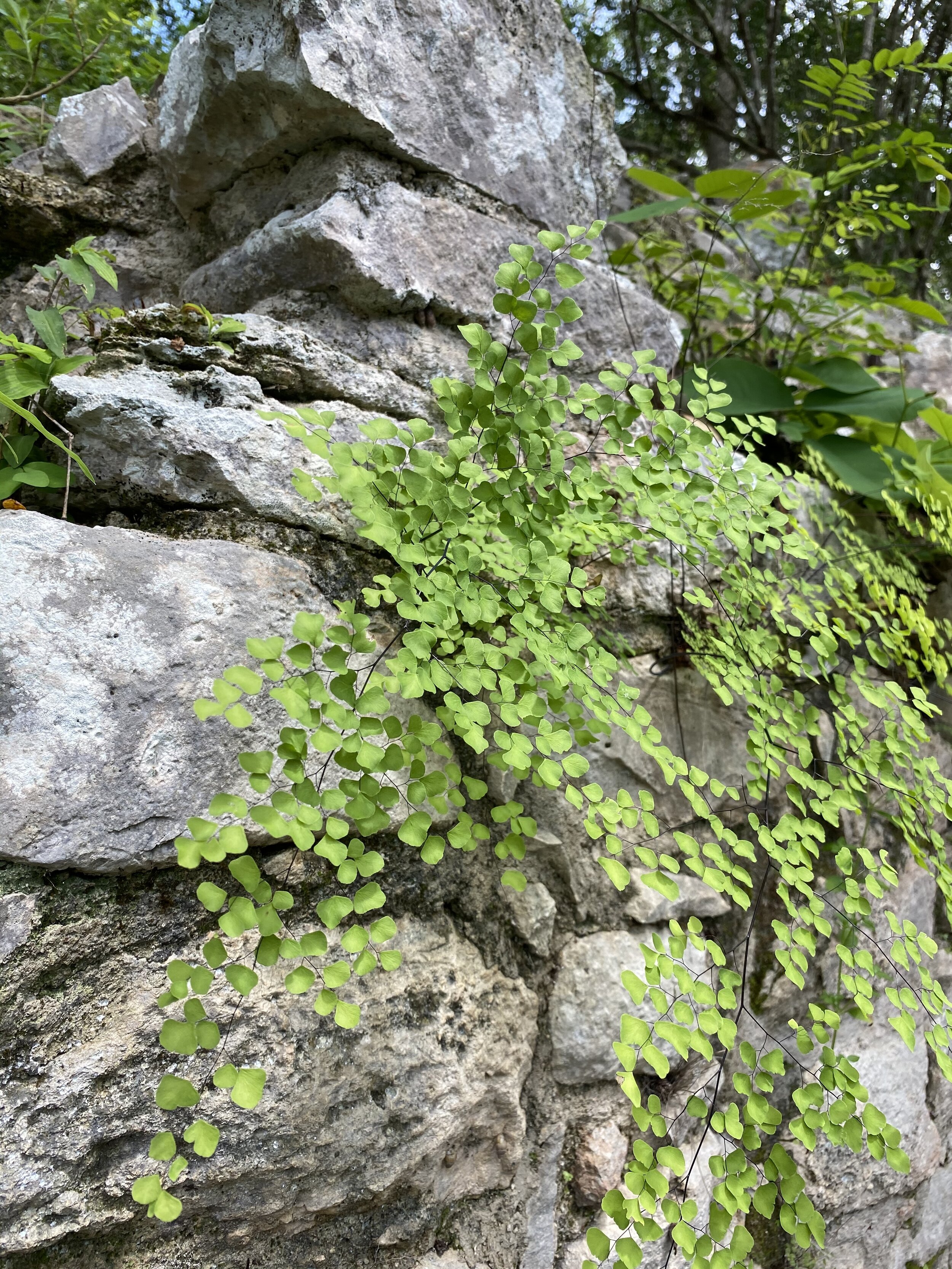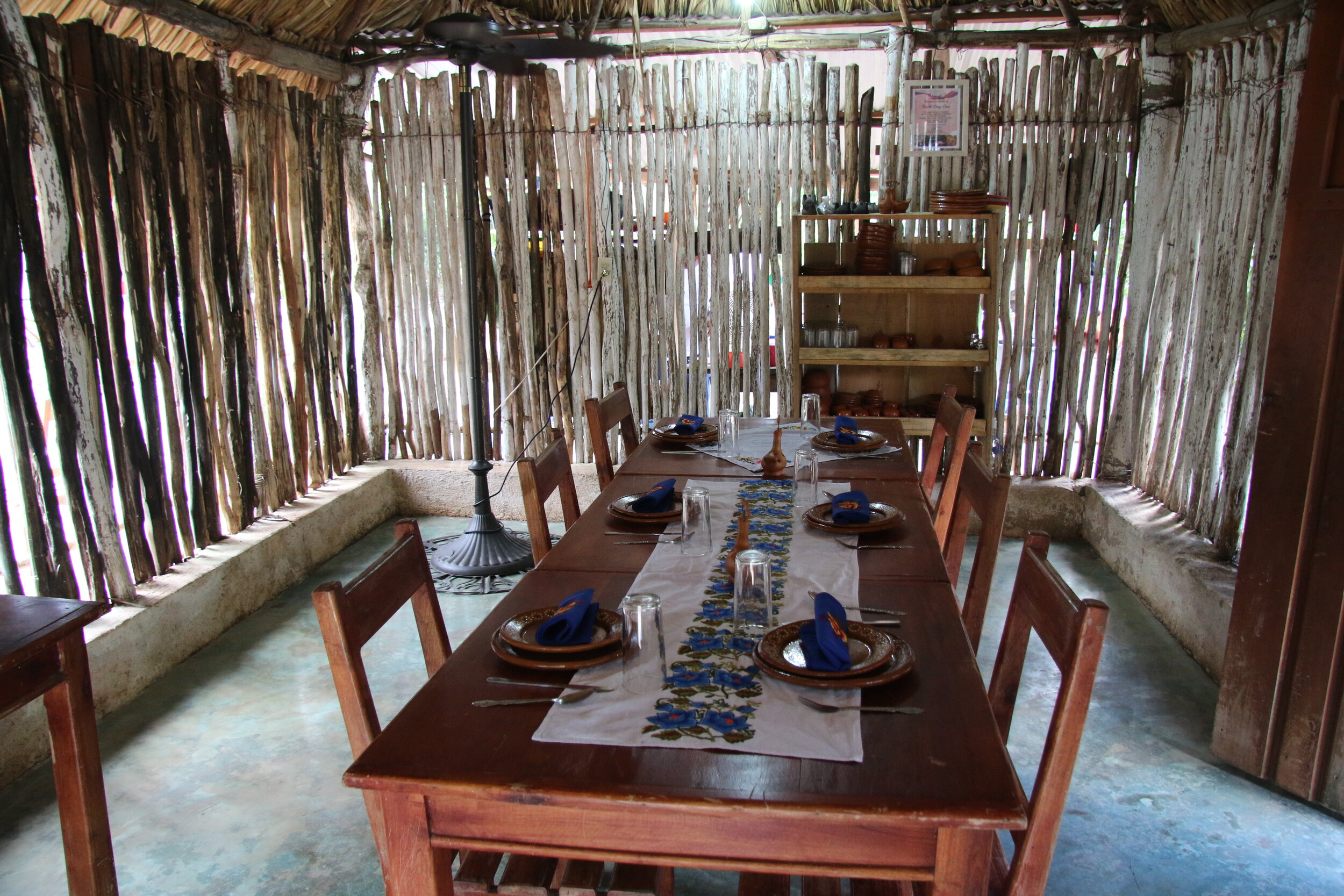When asked about the weather, us locals always love to mention that April and May are the hottest months of the year, which surprises people who expect you to say July or August. In fact April and May are the culmination of several months of normally continuous dry weather. There are brush fires along the sides of roads and in the countryside, both from carelessly tossed cigarette butts and from campesinos doing annual burns to prepare fields for planting in the coming rainy season. The landscape goes from multi-hued green to dry, grey, crispy. The rocks everywhere are evident and previously hidden vestiges of ancient monuments emerge from their hiding places in the Yucatan’s dry tropical forest.
And yet, in spite of this rather stark landscape, nature is alive and well and really active at this time of the year. The mangos are coming. Ciruela or abal, as they are known here, are ripening. Grosellas are popping on scrubby trees. Caimito, limón indio and mamey. And flowers! At no other time of the year are there so many flowers, from wild vines in fluorescent purple, yellow and fuschia to more domesticated varieties like flor de mayo (frangipani or plumeria), bougainvillea, flamboyan, lluvia de oro, and others.
The frangipani with their velvet-like colors and sweet vanilla scent are stunning and you can find them in shades of creamy white to almost shocking purple and fuschia. The photos below are from the town of Dzitya, taken at 11 AM on a scorching 41-degree day. They are beautiful, are they not?
